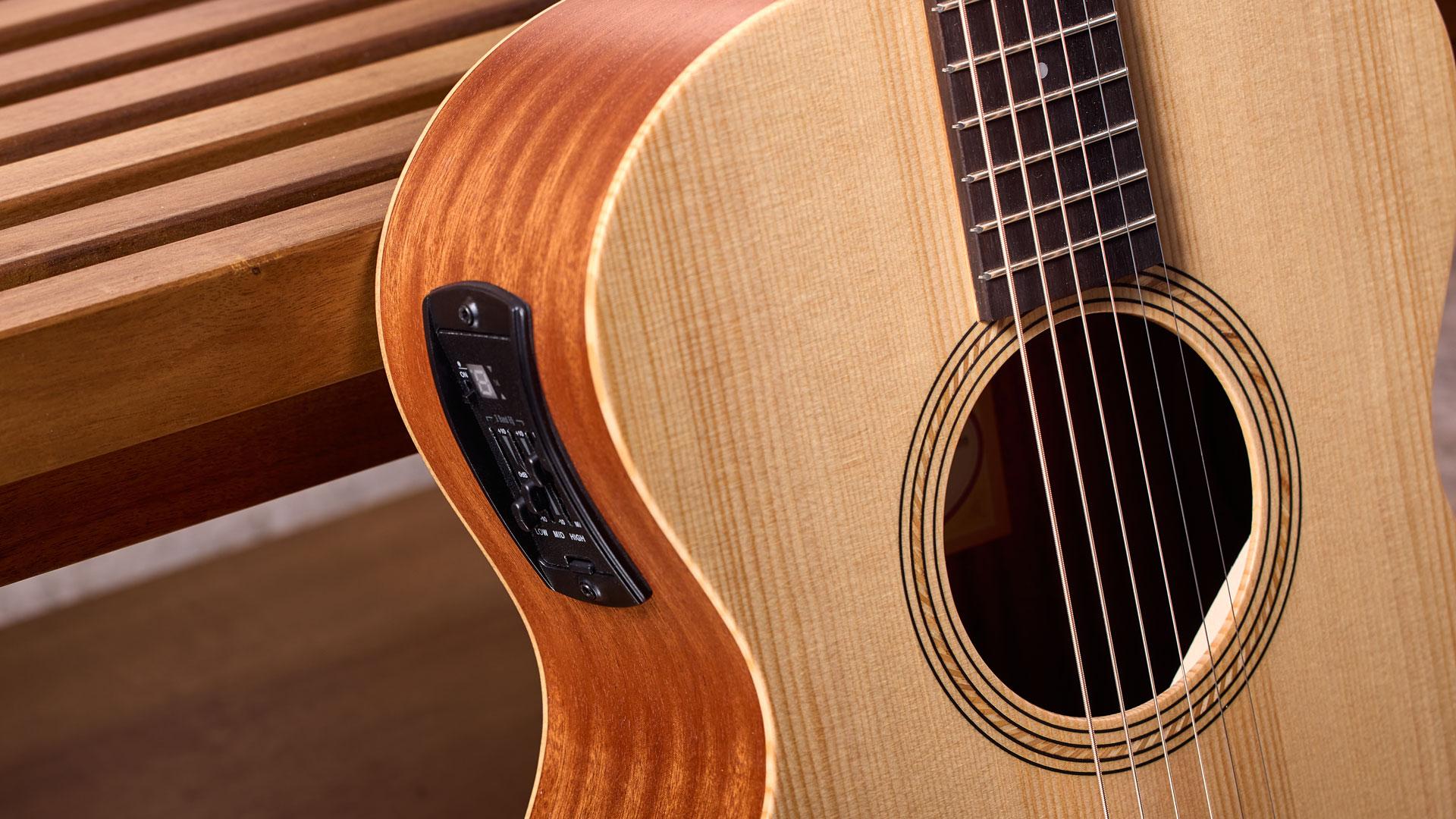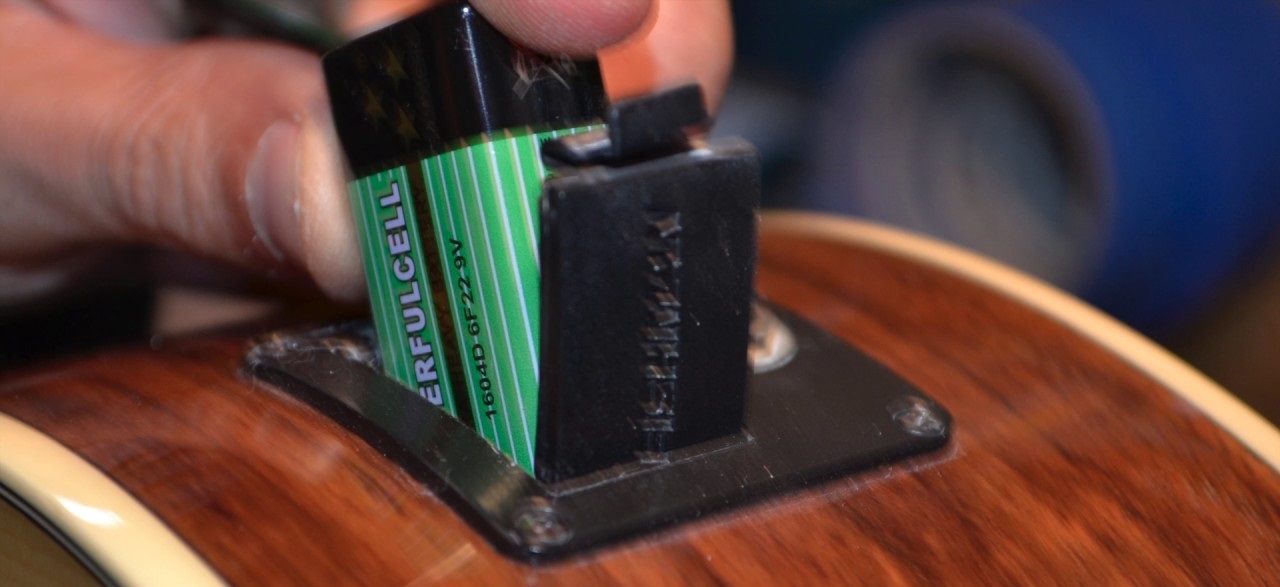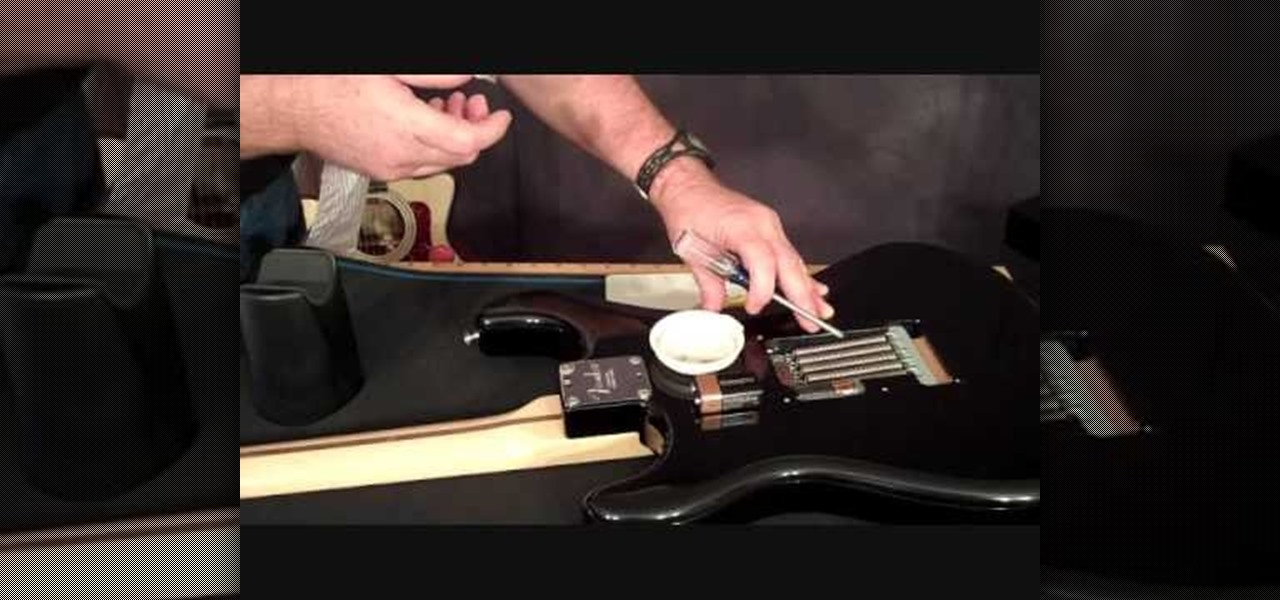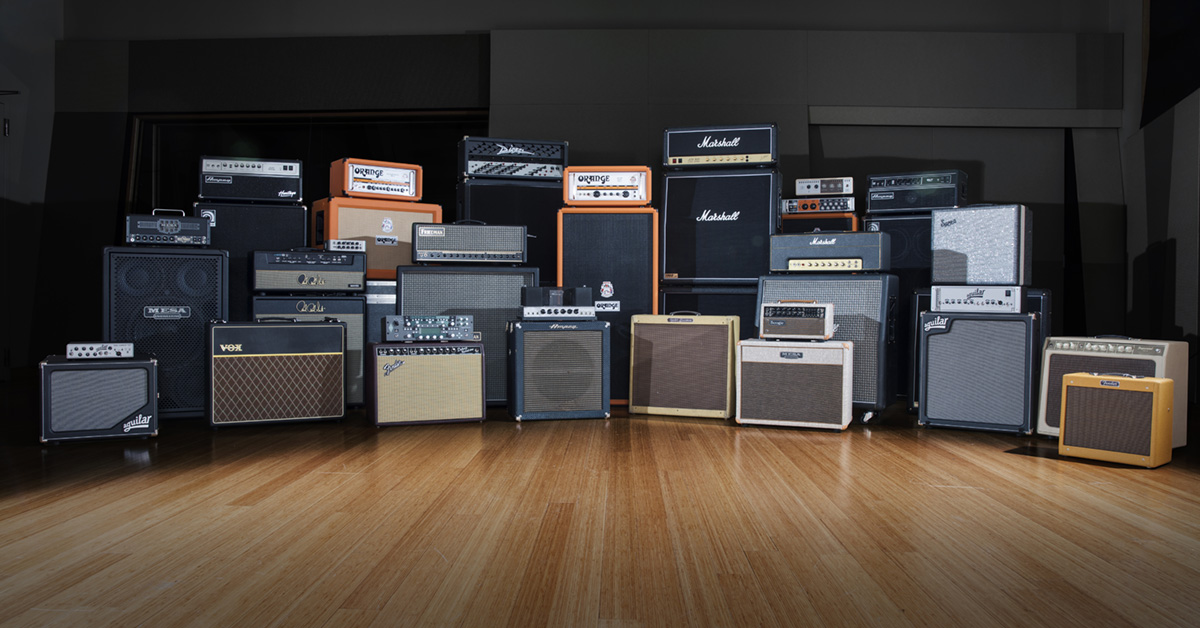Introduction
Welcome to the world of acoustic guitars! Whether you’re a professional musician or just starting your musical journey, you may have come across the term “acoustic guitar preamp battery.” If you’re not familiar with what it is or how long it lasts, you’ve come to the right place. In this article, we will explore all there is to know about acoustic guitar preamp batteries and how long they typically last.
An acoustic guitar preamp battery is a small power source that is used to operate the preamplifier system in your acoustic guitar. The preamplifier is responsible for amplifying the signal from the guitar’s pickup, enhancing its sound quality, and sending it to an external amplifier or PA system. It is an essential component for gigging musicians or those who want to amplify their acoustic sound.
Now, you might be wondering why you need a battery in the first place. Well, the majority of acoustic guitar preamps are designed to be portable and can be used anywhere, even without being connected to an external power source. This versatility allows you to perform in various venues, whether they have power outlets or not. The battery powers the preamp system, ensuring that you can plug in, play, and be heard wherever you go.
The battery life of an acoustic guitar preamp depends on several factors, including the type of battery used and how you use your guitar. In the following sections, we will delve deeper into these factors and explore the different types of acoustic guitar preamp batteries available in the market today. So, let’s jump right in and discover how long an acoustic guitar preamp battery can last!
What is an Acoustic Guitar Preamp Battery?
An acoustic guitar preamp battery is a small power source that is utilized to operate the preamplifier system in an acoustic guitar. The preamp system is responsible for boosting the signal from the guitar’s pickup, improving its sound quality, and transmitting it to an external amplifier or PA system. It is an essential component for musicians who want to amplify the sound of their acoustic guitar during live performances or recordings.
The preamp system typically consists of an equalizer, tone controls, volume controls, and sometimes built-in effects. These features allow the guitarist to shape their sound according to their preferences and the requirements of the performance. The preamp battery powers the electrical circuitry of the preamplifier system, enabling it to function independently without the need for a direct power source.
Acoustic guitar preamp batteries are designed to be portable, allowing musicians to perform in various locations without being limited by the availability of power outlets. This portability is especially advantageous for live gigs, street performances, or outdoor events where access to electricity may be limited. By using a preamp battery, guitarists can amplify their acoustic sound and ensure that their music reaches the audience with clarity and volume.
Most acoustic guitar preamp batteries are housed in a compartment or accessed through a panel on the side of the instrument. This ensures easy access and allows for quick battery changes during performances. It is important to note that different brands and models of preamps may require different types and sizes of batteries, so it is crucial to check the manufacturer’s instructions or consult a professional if you are unsure.
Overall, an acoustic guitar preamp battery is a crucial component for any guitarist who wants to amplify their acoustic sound. It provides the necessary power to operate the preamplifier system, allowing for greater control and flexibility in shaping the guitar’s tone. With a preamp battery, guitarists can take their acoustic performances to the next level and captivate their audience with a full, rich sound.
Factors that Affect the Battery Life
Several factors can affect the battery life of an acoustic guitar preamp. Understanding these factors will help you maximize the longevity of your battery and avoid unexpected power loss during performances. Here are some key factors that influence the battery life:
- Battery Type: The type of battery you use can significantly impact its lifespan. Common types of batteries used in acoustic guitar preamps include 9-volt alkaline, lithium, and rechargeable batteries. While alkaline batteries are readily available and easy to replace, rechargeable batteries may offer a more cost-effective and eco-friendly alternative in the long run.
- Usage: The amount of time you spend using your preamp system will affect the battery life. If you regularly perform long gigs or intensive recording sessions, you can expect the battery to drain quicker compared to occasional use. The more you rely on your preamp, the shorter the battery life will be.
- Volume Levels: Higher volume levels require more power from the preamp system, causing the battery to drain faster. If you consistently play at loud volumes, it is important to be mindful of the battery level and have spare batteries on hand for uninterrupted performances.
- Effects and EQ Settings: Certain preamp features, such as built-in effects and extensive EQ adjustments, can consume more power. When using these features, be aware that they may reduce the battery life compared to simpler settings. Adjusting the effects and EQ to a minimum when not needed can help prolong battery life.
- Temperature: Extreme temperatures, both hot and cold, can affect battery performance. Batteries tend to drain faster in high temperatures, while cold temperatures can reduce the overall battery capacity. It is advisable to store your guitar in moderate temperature environments to maintain optimal battery life.
By considering these factors and making mindful choices, you can extend the battery life of your acoustic guitar preamp. This will ensure that you have reliable power for your performances and recordings, reducing the chance of unexpected power failures.+
Types of Acoustic Guitar Preamp Batteries
When it comes to acoustic guitar preamp batteries, there are several types available in the market. Each type has its own advantages and considerations, so let’s explore the most common ones:
- 9-Volt Alkaline Batteries: These are the standard batteries used in many acoustic guitar preamps. They are easily accessible, affordable, and provide reliable power. However, they are not rechargeable and have a limited lifespan. It is advisable to keep spare 9-volt alkaline batteries on hand to ensure uninterrupted performance.
- Lithium Batteries: Lithium batteries are known for their longer lifespan and higher energy density compared to alkaline batteries. They tend to last longer, making them a popular choice among gigging musicians who require extended battery life. However, they can be more expensive and may not be as widely available as alkaline batteries.
- Rechargeable Batteries: Rechargeable batteries, such as NiMH (Nickel-Metal Hydride) or Li-ion (Lithium-ion) batteries, offer an eco-friendly and cost-effective solution. They can be recharged multiple times, reducing the need for frequent battery replacements. Rechargeable batteries typically have a lower voltage (e.g., 1.2 volts for NiMH) compared to alkaline or lithium batteries (e.g., 1.5 volts), so it is important to ensure compatibility with your preamp system.
- Built-in Battery Systems: Some acoustic guitars and preamp systems come with built-in rechargeable battery systems. These systems eliminate the need for external batteries, as they can be charged using a power adapter or USB cable. Built-in battery systems offer convenience and can be more cost-effective in the long run, but it is essential to ensure proper charging and maintenance for optimal performance.
- External Power Supply: In addition to battery options, some acoustic guitars and preamp systems can also be powered by an external power supply. This allows you to connect your guitar directly to an electrical outlet or a pedalboard power supply, providing continuous power without the need for batteries. External power supplies can be a reliable option for musicians who prefer a consistent power source during performances.
It’s important to consider your specific needs and preferences when choosing the type of battery for your acoustic guitar preamp. Factors such as cost, availability, longevity, and environmental impact should be taken into account. Understanding the different options available will help you make an informed decision and ensure reliable power for your performances.
How Long Does a Typical Acoustic Guitar Preamp Battery Last?
The battery life of an acoustic guitar preamp can vary depending on several factors, including the type of battery and how you use your guitar. On average, a typical acoustic guitar preamp battery can last anywhere from 10 to 30 hours of continuous use.
The primary factor that determines the battery life is the type of battery being used. Alkaline batteries, which are commonly used in acoustic guitar preamps, have a relatively shorter lifespan compared to rechargeable batteries. Alkaline batteries typically last around 10 to 15 hours, depending on the power demands of the preamp system and the volume levels at which you play.
On the other hand, lithium batteries and rechargeable batteries tend to have a longer lifespan. Lithium batteries can last anywhere from 15 to 30 hours, providing extended power for longer performances or recording sessions. Rechargeable batteries, depending on their capacity and voltage, can offer similar or even longer battery life compared to alkaline batteries. However, it’s important to note that rechargeable batteries may have a slightly lower voltage (1.2 volts) compared to alkaline or lithium batteries (1.5 volts), which might affect the overall performance of the preamp system.
It’s essential to be mindful of the battery level and have spare batteries available, especially during prolonged performances or important recording sessions. Regularly checking the battery level and replacing it before it drains completely will help ensure uninterrupted power and prevent any sudden drop in sound quality or volume.
It’s worth mentioning that these estimates are general guidelines and can vary depending on how you use your guitar, including factors such as volume levels, usage duration, and the specific features of your preamp system, such as built-in effects and EQ settings. Higher volume levels and more intensive use of features can shorten the battery life compared to playing at lower volumes or using simpler settings.
Remember to follow the manufacturer’s instructions regarding battery replacement and usage recommendations for your specific preamp system. By understanding the battery life of your acoustic guitar preamp and taking proper care, you can ensure reliable power for your performances and recordings.
Tips to Extend the Battery Life
If you want to make the most out of your acoustic guitar preamp battery and extend its lifespan, here are some helpful tips:
- Keep an eye on battery levels: Regularly check the battery level and replace it when it starts to run low. This will prevent sudden power loss during performances and ensure consistent sound quality.
- Use the appropriate battery type: Use the recommended battery type for your preamp system as stated by the manufacturer. Alkaline, lithium, or rechargeable batteries have different energy capacities and performance characteristics, so choose the one that suits your needs best.
- Optimize volume levels: Playing at lower volume levels can help conserve battery power. While it’s important to project your sound, excessive volume can drain the battery faster. Find the balance between achieving the desired volume and maximizing battery life.
- Minimize use of built-in effects: Built-in effects, such as reverb or chorus, can consume additional power. To extend battery life, only use effects when necessary and disable them when not in use.
- Reduce EQ adjustments: Extensive EQ adjustments can increase power consumption. Minimize unnecessary EQ changes and find a suitable tone setting that requires fewer adjustments, helping to preserve battery life.
- Disconnect when not in use: If you are taking a break during a performance or not using your guitar for an extended period, disconnect the cable from the preamp to conserve battery power. This will prevent any unnecessary power drain.
- Store in moderate temperature: Extreme temperatures can affect the performance and longevity of batteries. Avoid storing your guitar in extremely hot or cold environments, as it can impact the battery life negatively.
- Consider rechargeable batteries: If your preamp system supports it, using rechargeable batteries can be a cost-effective and environmentally friendly option. Be sure to follow the proper charging guidelines and cycles recommended by the battery manufacturer.
By implementing these tips, you can extend the battery life of your acoustic guitar preamp and reduce the frequency of battery replacements. However, it’s always a good idea to have spare batteries on hand, especially for important performances or recording sessions, to ensure uninterrupted power.
Remember, maximizing battery life is not only cost-effective but also helps maintain consistent performance and sound quality from your acoustic guitar preamp. Take care of your batteries, use them wisely, and enjoy uninterrupted power for your musical endeavors.
Signs that Your Acoustic Guitar Preamp Battery Needs Replacement
As a guitarist who relies on your acoustic guitar preamp for amplification, it’s essential to recognize the signs that indicate your battery needs replacement. Here are some common signs that your acoustic guitar preamp battery is running low:
- Reduced volume: One of the first indications that your battery is running low is a noticeable decrease in volume. If you find that your guitar’s sound is not as loud or strong as usual, it may be time to replace the battery.
- Distorted or muddy sound: As the battery loses power, you may experience distortion or a drop in sound quality. The tone may become muddy or lack clarity and definition. If you notice a significant change in your guitar’s tone, consider changing the battery to restore optimal sound quality.
- Intermittent sound: A dying battery can cause the sound to cut in and out intermittently. You may experience periods of silence or a sudden loss of signal, followed by it returning. If you encounter this issue, it’s a clear indication that the battery is no longer providing consistent power and needs replacement.
- LED indicator: Many acoustic guitar preamps have an LED indicator to show the battery level. If your preamp has this feature, pay attention to the indicator’s color or blinking pattern. A flashing or red-colored LED usually indicates a low battery level, signaling that it’s time to replace it.
- Inconsistent performance: If you notice that your preamp is behaving unpredictably or erratically, such as sudden drops in volume or changes in tone, it may be due to a weak battery. Inconsistent performance can hinder your playing experience and disrupt your performance, so prompt battery replacement is advisable.
- No power: The most obvious sign that your preamp battery needs replacement is a complete power failure. If your preamp fails to turn on or produces no sound at all, it’s likely that the battery is dead and needs to be replaced.
It’s important to address these signs promptly to avoid any disruptions or inconsistencies during performances. Keeping spare batteries on hand and developing a habit of checking battery levels before gigs or recording sessions will help prevent unexpected power failures and ensure uninterrupted playability.
Remember, understanding the signs of a dying battery and taking action promptly will help you maintain the optimal performance of your acoustic guitar preamp and ensure that your sound always shines through.
Conclusion
Acoustic guitar preamp batteries play a vital role in amplifying the sound of your acoustic guitar and ensuring that your music reaches the audience with clarity and power. Understanding the factors that affect battery life, different types of batteries available, and how you can extend their lifespan is crucial for every guitarist.
By considering factors such as battery type, usage patterns, volume levels, and effects usage, you can optimize the battery life of your acoustic guitar preamp. Using the appropriate battery type, minimizing unnecessary power consumption, and taking proper care of your batteries can help maximize their lifespan and prevent unexpected power failures during performances or recording sessions.
Being aware of the signs that indicate your battery needs replacement, such as reduced volume, distorted sound, or intermittent sound, can prevent any disruptions during your musical endeavors. Regularly checking battery levels and keeping spare batteries on hand will minimize the risk of unexpected power loss and ensure consistent performance.
In conclusion, understanding the characteristics and maintenance of acoustic guitar preamp batteries is essential for any guitarist looking to amplify their sound. By following the tips provided and being attentive to the battery life and performance indicators, you can enjoy uninterrupted playability and showcase your musical talents with confidence.

























